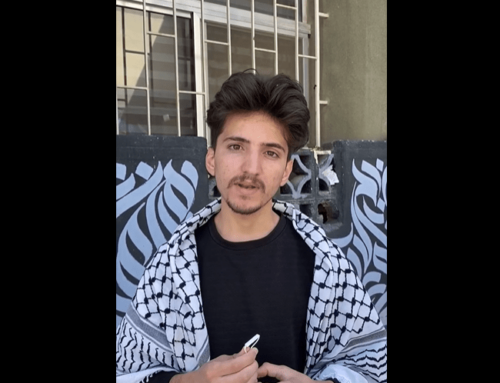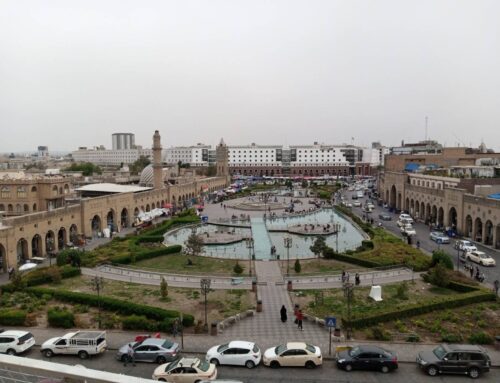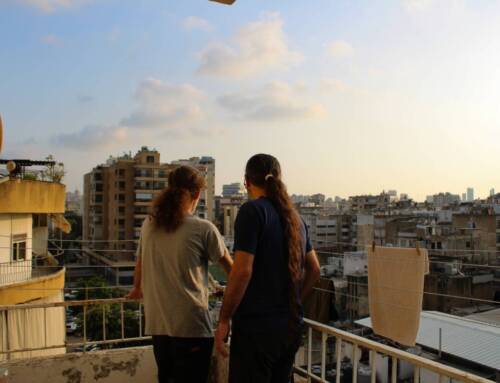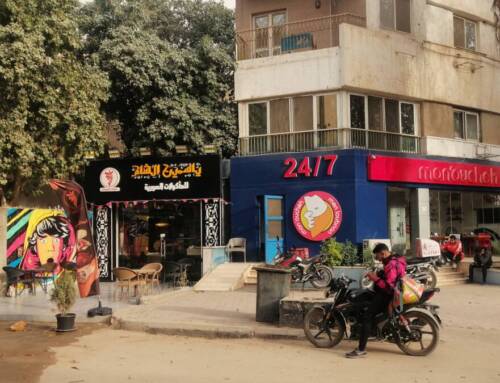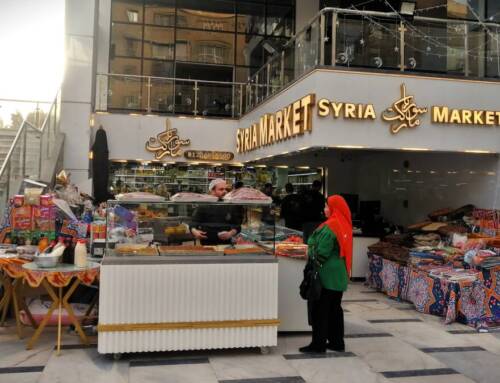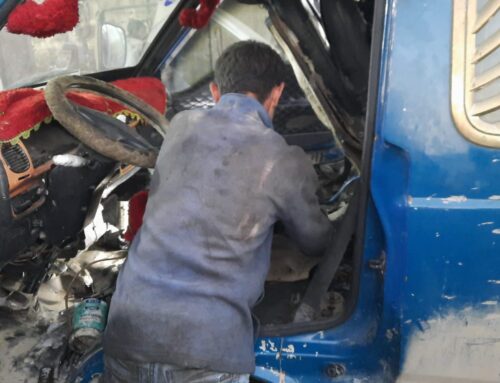Some looted Idlib National Museum artifacts resurface, fate of others a mystery amidst ‘thriving black market trade’
As rebel forces moved closer to capturing Idlib city from […]
18 October 2016
As rebel forces moved closer to capturing Idlib city from the regime in spring 2015, the employees of the Idlib National Museum moved their collections—which included priceless cuneiform tablets dating back to around 2,500 BCE—into sealed underground storage.
Six days after the Victory Army—a rebel coalition including Ahrar a-Sham, Jund al-Aqsa and Jabhat a-Nusra—captured Idlib city, a regime barrel bomb ripped a hole in the ceiling one of the underground storerooms, exposing its contents.
Amidst rumors that the artifacts had been looted, nobody—museum employees and others—was allowed on the premises. The museum has been shuttered since then, closely guarded by Ahrar a-Sham.
For 19 months, the fate of the collections remained a mystery, even to those who once worked at the museum.
Then, in early October, some of the looted artifacts resurfaced in a headquarters belonging to Jund al-Aqsa in the Idlib countryside after rival faction Ahrar a-Sham captured the base in rebel infighting. Plastic crates filled with numbered bags containing pottery shards appear in photos posted online by Ahrar.
Ayman Nabu immediately recognized the artifacts. Nabu is the founding director of the Idlib Antiquities Center, an organization made up of former museum employees that seeks to protect Idlib’s ruins and artifacts. The center also documents the sale and smuggling of artifacts. Nabu worked in the museum’s research department before it was shut down after rebels captured Idlib city.

The artifacts shown in Ahrar’s pictures “are pottery,” Nabu told Syria Direct’s Noura Hourani, of little material value, but used for archaeological studies and to determine the age of different archaeological sites.
“A thief wouldn’t be able to tell the valuable artifacts from the others,” he said.
Idlib is home to more than 760 archaeological sites and ruins, representing a third of Syria’s total antiquities sites and 51 percent of the country’s archaeological mounds.
While some of the artifacts have now resurfaced, they have not been turned over to the IAC. The fate of the remaining artifacts is unknown, and may already be gone, Nabu says.
“Unfortunately, under these circumstances the opposition areas have become a thriving black market for artifacts.”
Q: Do you have an idea of the number of pieces that have been taken from the museum?
We know that some of the artifacts were removed, but not all of them. What concerns us the most are the approximately 15,000 cuneiform tablets that were discovered in the Ebla area.
We have tried to find out which artifacts are still in the museum, but haven’t come to any result with the powers that be, whether the Victory Army, Ahrar a-Sham, or Jabhat a-Nusra [now known as Jabhat Fatah a-Sham]. The factions don’t have the will to reopen an Antiquities Department alternative to the regime’s.
In my role, I have requested of the Victory Army administration several times to reestablish the Antiquities Department, like they did with the civil and educational institutions in Idlib. I have also called for an inventory committee to be formed and authorized to find out what has been taken from the museum. There hasn’t been any answer.
It appears as though there is internal competition about who will run the museum among those who participated in the liberation of the city: Failaq a-Sham, Ahrar a-Sham, Jabhat [Fatah a-Sham] and Jund al-Aqsa. The museum itself remained a point of mystery until the clashes between Ahrar and Jund, when the pictures [of stolen artifacts] came out.
Q: Describe the artifacts that were found earlier this month. How can you verify that what was shown in the video is from the Idlib National Museum?
The artifacts shown in the video and pictures are ones that were kept in the Idlib National Museum’s storage prior to the revolution. They were kept in the basement, intended for study by our archaeological missions.
[Ed.: Nabu, and the other members of the Idlib Antiquities Center, worked at the Idlib National Museum prior to the city’s capture by rebel forces in early 2015.]One of our jobs was to put these artifacts in special bags and catalog them with certain numbers and symbols according to the archaeological mounds and dig sites where they were discovered.

Q: What is the importance of these resurfaced artifacts?
They are pottery, without significant material value. Rather, they have historical value and were used as specimens for study. They were also used to define the age of the [excavation] layer where they were discovered, and the age of the archaeological mounds.
Q: Who is responsible for the Idlib National Museum? Had you previously documented thefts of artifacts from it?
Ahrar a-Sham has been responsible for protecting and guarding the museum since the opposition took control of Idlib city from the regime in [March] 2015.
As members of an official archaeological delegation, we immediately went to the museum the day after Idlib was taken to document and investigate [the contents of the museum]. We spent five days there, and everything was fine.
Then on the sixth day, a regime barrel bomb landed south of the museum, creating a hole in the ceiling of the underground storage.
Most of the artifacts had been taken down into these storerooms since the revolution began [in 2011], and only a few remained on display in the museum building.
[Ed.: The Idlib museum’s underground storage space runs not only below the main building, but extends further outwards, and is larger than the above-ground building itself. The storage consists of a number of sealed-off rooms, without doors, that are difficult to break into.]After the bombing, we heard that many artifacts had been stolen and the storehouse emptied. Ahrar a-Sham confirmed that in our meetings with them, but didn’t say who was responsible.
Q: Were you allowed to enter the museum after learning that some pieces were stolen?
We weren’t given permission to enter after the pieces were stolen. Security at the museum was stepped up, and orders were given to prevent anybody from entering, whether in an official capacity or not.
Ahrar a-Sham opened an investigation into the pieces that were taken from the museum, and told us that they were pursuing the matter to learn who was responsible. We followed up with them for an entire year, with no result. Since then, [the fate of what remains in] the museum has been a secret.
Q: You mentioned that the artifacts that were discovered do not have great material value. Wouldn’t the valuable cuneiform pieces be the first to be stolen?
All the artifacts were put in bags and special boxes. The precious cuneiform tablets are in locked wooden boxes, stored in a way to protect them from humidity and decay. Large statues, on the other hand, remain uncovered.
So you can’t see what is inside the boxes, and it is likely that a thief wouldn’t be able to tell the valuable artifacts from the others. Opening the box could cause damage.
For that reason, the perpetrators who emptied the storeroom when it was exposed by the bombing took all of the boxes. The remaining storage is made up of storerooms without doors, and if anyone wanted to enter them, they would have to destroy the walls.
Q: Are you documenting the sale and smuggling of artifacts in Idlib? What is the role of the center in this regard? Are there other important archaeological sites that you oversee?
Unfortunately, under these circumstances the opposition areas have become a thriving black market for artifacts. One of the roles of our center is to document the pieces that are sold or smuggled. We have documented more than 3,400 artifacts as leaving the country, while we are currently holding 1,700 under our protection.
[Ed.: Relying on pictures and word-of-mouth evidence, the center documents the flow of historical artifacts out of Idlib province.]Each artifact has a number and identifying card that we have, and there are dozens that have been sold in the black market. Any artifact we hear [is being sold], we try to get pictures of it and document it immediately.
The core of our work is to safeguard all of the artifacts, and we have protected what we can in different private locations. We hold complete registers of the museum’s holdings, and are in contact with the sharia courts, police, and local councils, with whom we have understandings.


